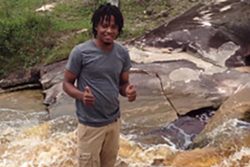WASHINGTON, (Reuters) – Even by the standards of North Korea’s dilapidated shipping fleet, which often carries contraband and sails vessels until they sink, the recent failed attempt to transport Cuban arms through the Panama Canal was a risky business.
Caught carrying narcotics in Ukraine in 2009, the Chong Chon Gang vessel was already known to law enforcement and was plying waters closely watched by the United States before it was seized in Panama last week.
Just bearing a North Korean flag is enough for a ship to raise suspicions of port authorities and coast guards throughout the world. North Korea is infamous for running one of the world’s most unsafe merchant marine fleets, a collection of around 250 rusting ships that are mostly decades old.
With so many eyeballs on North Korea and its vessels, the Chong Chon Gang’s voyage “smacks of desperation and stupidity,” said Hugh Griffiths of the Stockholm International Peace Research Institute (SIPRI).
“There’s nowhere else on the planet, on the high seas, where an interdiction is more likely to occur than in the Caribbean because that is the U.S. backyard and where the highest number of interdictions have happened,” added Griffiths, who runs a SIPRI program on countering illicit trafficking.
A U.S. intelligence official said Panama had used information from the United States to help it seize the ship carrying missile equipment, MiG fighter jets and other arms.
North Korean ships are always under close scrutiny because of U.N. sanctions that were imposed after Pyongyang carried out a series of nuclear bomb tests that begun in 2006 and the shipment appears to be a violation of sanctions.
Trips to the Western Hemisphere are rare for North Korean ships, which are mostly workhorses that carry cheap cargo like scrap metal and feed grain in Asian waters.
“The vessels are small and most of their trade is very local to North Korea and it’s unusual to see them so far from home,” said Richard Hurley of IHS Maritime, a London-based security analysis firm. “It’s certainly unusual to see them in the Caribbean and certainly transiting through the Panama Canal,” he said.
It is not known why the Chong Chon Gang and its 35 crew members took such a risk in going through the Panama Canal, instead of going home via a longer, less-conspicuous route.
But the fact that it was carrying tons of Cuban sugar in apparent barter payment for missile repairs shows how eager North Korea is for basic supplies.





